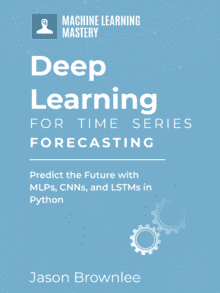
Enhancing Forex Market Forecasting with ConvLSTM2D: A Deep Dive
In the fast-paced world of Forex trading, accurate forecasting is paramount. Recent advancements in deep learning, particularly the Convolutional Long Short-Term Memory Two-Dimensional (ConvLSTM2D) model, have shown promise in enhancing the accuracy of Forex predictions. This article delves into how ConvLSTM2D can be leveraged to forecast multiple currency pairs simultaneously, capturing the intricate interdependencies that traditional models might overlook.

The Importance of Accurate Forecasting
The Forex market is characterized by its complexity, influenced by a myriad of economic, political, and social factors. Accurate forecasting can provide traders with a competitive edge, allowing them to make informed decisions based on predicted price movements. The ability to predict short-term price changes is particularly valuable, as it enables traders to capitalize on fleeting market opportunities. According to the Bank for International Settlements, the Forex market was valued at approximately $6.6 trillion daily as of April 2023, emphasizing the significance of precise forecasting in maximizing trading strategies.
ConvLSTM2D: A Game Changer in Forecasting
ConvLSTM2D extends the capabilities of traditional LSTM models by incorporating convolutional operations, allowing it to analyze two-dimensional spatial data over time. This dual focus enables the model to capture both spatial patterns (e.g., relationships between different currency pairs) and temporal patterns (e.g., sequential price movements). Such a comprehensive approach is essential for navigating the non-linear and dynamic nature of Forex data.
In a recent study, ConvLSTM2D was employed to predict the next hour's price values for 32 currency pairs over a timeframe spanning January 2, 2014, to December 29, 2023. The study utilized advanced preprocessing techniques, including hierarchical clustering and various scaling methods, to optimize model performance. The results indicated an impressive Mean Absolute Percentage Error (MAPE) of 3.7% on the validation dataset, showcasing the model's robustness in predicting price movements.
Methodology and Findings
The study utilized a meticulously compiled dataset comprising hourly Forex trading data from a reputable trading platform, ensuring the reliability of the findings. Various preprocessing techniques were employed, including:
- Hierarchical Clustering: To group currency pairs based on correlation, reducing redundancy.
- Scaling Techniques: Value at Risk (VaR) and Rolling Window (RW) methods were tested to enhance prediction accuracy.
The optimal configuration identified included a hierarchical single arrangement, a rolling window scaling with a window size of 16, time steps of 8, and frame height of 8. This setup achieved a MAPE of 3.7% on the validation dataset and 4.0% on the test dataset, confirming the model's effectiveness in capturing complex market dynamics.
Implications for Traders
The findings underscore the potential of ConvLSTM2D in enhancing forecasting accuracy within the Forex market. Traders can benefit from adopting this model, particularly in developing automated trading strategies that leverage real-time data analysis. For instance, deploying ConvLSTM2D in algorithmic trading could significantly reduce the time taken to analyze market conditions and execute trades.
As the Forex landscape continues to evolve, integrating advanced machine learning techniques will be crucial for maintaining a competitive edge. Market analysts can also utilize insights derived from ConvLSTM2D to inform their trading strategies and risk management practices.
Conclusion
In conclusion, the application of ConvLSTM2D in Forex forecasting represents a significant advancement in the field. By effectively capturing the complex interdependencies within the market, this model offers traders a powerful tool for making informed decisions. As technology continues to advance, the integration of deep learning models like ConvLSTM2D will likely become a standard practice in Forex trading strategies.
With the increase in computing power and the availability of large datasets, the prospect of enhancing forecasting accuracy through deep learning is more feasible than ever. For traders looking to boost their competitive advantage, embracing models like ConvLSTM2D could prove vital in navigating the complexities of the Forex market.
To read more about ConvLSTM2D and its applications in financial forecasting, refer to the detailed study here.

As Forex trading technology evolves, continuous education and adaptability will be essential for success in this dynamic environment. Embracing the capabilities of advanced models like ConvLSTM2D can empower traders to make more informed decisions and navigate the complexities of the financial markets effectively.